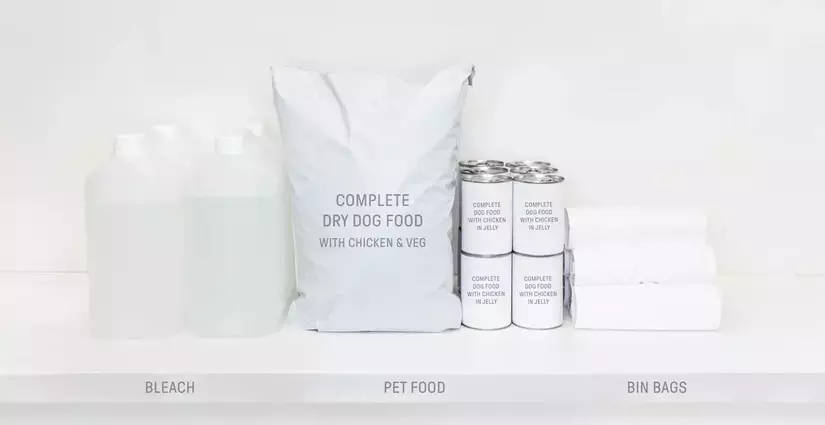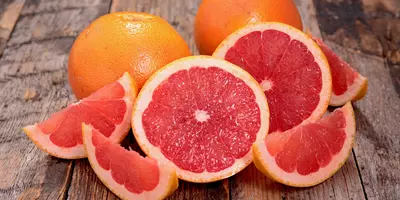Is Wet Food Good for Dogs?
- 18 Dec 2019
- 6m read

What is Wet Dog Food?
Traditionally, wet food, usually in tins, has been the go-to way to feed our dogs for decades. However, the famous phrase if it ain’t broke don’t fix it may not apply here. Now that we know a little bit more and care a lot more about dog nutrition, it’s time to reconsider what exactly goes into their food. Wet food can come in many forms, but it is most often sold in tins and trays.
How is Wet Dog Food Made?
Wet food is made by combining all of the raw ingredients, grinding them down and cooking at a temperature that activates the starches and thickens the mixture, giving it the jelly-like appearance. It is then added to cans, sealed and sterilised. Along the way all sorts can be added to it, including preservatives to lengthen its shelf life and nutritionally-incomplete fillers to ‘bulk’ the product out.
Advantages of Wet Dog Food
Convenient
Thanks to 24/7 supermarkets there’s unlikely to be a moment in the day that you don’t have access to dog food, should you find yourself in a pooch-related emergency. Wet dog food is readily available in most, if not all grocery shops.
The slightly sadder side of the story is that wet dog food is often found in the household items aisle, next to bleach and toilet rolls. We like to think our pooches are worthy more than that. They are also pre-prepared, meaning dinner time is merely a case of decanting the contents into a bowl and allowing your pup to dig in.
Cheap
Due to the bulk-manufacturing methods and often, cheap ingredients, it is fairly easy for wet dog food to be sold at a lower price point.
Disadvantages of Wet Dog Food
Additives and preservatives
Whilst a long shelf life might be an incentive of tinned dog food, the process behind preserving the food is less appealing. According to All About Dog Food, BHA, BHT, propyl gallate and potassium sorbate are some of the most commonly used artificial preservatives and antioxidants. There is speculation that these have been linked to behavioural issues and tumour formation. Yikes.
To avoid explicitly stating that they use these compounds, dog food manufacturers will instead include ‘EU-permitted antioxidants’ in their ingredient lists. Transparency is key when it comes to labels, so it’s best to err on the side of caution if you see vague references to ingredients.
Chances are they could be hiding something, but not in a cute way, like when your dog stuffs his treats down the sofa.
Plaque buildup
Due to its soft and sticky texture, tinned dog food can cause plaque to form on your dog’s teeth. If you're feeding your dog a tinned food diet, it is important that you schedule regular trips to the Vet to check up on your pooch’s dental health. If left untreated, the buildup can contribute to long-term tooth and gum decay.
Other Types of Dog Food
Dry
Dry dog food, sometimes referred to as kibble, is made through a process called extrusion, which basically takes raw ingredients and cooks them at extremely high temperatures. The product is then cut into shapes, dried out with hot air, cooled and coated in oils to boost flavour.
And… breathe. That’s a lot of effort to produce some unappealing brown balls. Cooking at such high temperatures is likely to strip a large portion of the beneficial nutrients away too, thumbs down from us.
Raw
Raw dog food is, as you would expect, raw meat (bones included) combined with things like raw eggs, fruit, vegetables and dairy products. Known as the BARF (biologically approved raw food’ diet, it is the closest your pooch will get to the diet of their canine ancestors. For this reason, there are many advocates for the diet.
However, the drawback of a raw diet is that there is a huge risk of bacterial contamination. When handling and serving raw food you must exercise extreme caution to prevent the introduction of this bacteria into your home, especially in households with small children.
It is also generally recommended that you avoid feeding raw food to pooches with sensitive stomachs, including puppies and dogs with pancreatitis.
Fresh (the best alternative)
Step aside, wet food – there's a new dog food in town. While wet food has been filling pets' tummies since the 1930s, freshly cooked is quickly becoming the most popular dog food category. The idea behind fresh is that it is produced in a similar way to how you would cook at home, without actually having to cook it at home, thanks to fresh pet food suppliers, such as us.
Fresh food preparation involves taking quality, raw ingredients and gently cooking them to kill off any unwanted bacteria but retain vital nutrients. There's no heavy processing and no artificial ingredients or pointless fillers are added. The food can be preserved for longer by being placed in the freezer.
Butternut Box vs Wet Dog Food
What's the difference between Butternut Box meals and an off-the-shelf wet dog food? At first glance, that seems like a strange question. Surely Butternut Box, all juicy and moist, is wet dog food? Yes, technically, it is but it's definitely different to canned commercial wet foods. At Butternut Box we produce a new category of dog food, fresh. But what does ‘fresh’ truly mean and how does it differ from standard wet dog food?
You may be surprised to learn that the meat in a lot of canned dog food comes from ground-up leftover bits and bobs that can't be used for other purposes. We don't fancy eating that and our dogs deserve better. So, we only use meat we'd happily eat ourselves and we personally taste-test all of our recipes with help from our Nutritionists. They know exactly what dogs need to keep them bouncing fit and they also know which tempting flavours get the drool flowing.
We cook our Butternut meals just as you would if you prepped them in your own kitchen (paws off the table, please). As well as what goes in, we're conscious about what we leave out. By sticking with meat, veg and pulses, we create a healthy, nutritious mix, using only ingredients that you'd recognise from your local supermarket.
Gentle steam cooking means the ingredients in our meals stay wholesome and nourishing while any bacteria are killed off. In commercial dog-food production, the canning process involves heating the ingredients to high temperatures, which can affect the nutrients inside the food.
One of the really significant differences between Butternut Box and other wet dog foods is portion size. A Butternut Box plan is customised for your dog's specific nutritional needs based on questions we ask you, so there's no guesswork needed when it comes to dishing out the portions.
With canned wet foods, there are feeding guidelines to follow, but it's hard to know if you're getting it spot-on or not. With us, there's a pouch for every meal, and you can store your Butternut batch in the freezer until it's needed. You then defrost, dish out and serve. The best bit? Clean bowls all round.

.webp)


